
Xin Man, Ha Giang: What Makes This Region Special?
Xin Man district has a complex terrain, located in the upper Chay River mountain range, so it is mainly hills with steep slopes and divided by many streams.
Mau Due Commune is a hidden gem nestled in the Ha Giang Province of Vietnam, characterized by its breathtaking landscapes and rich cultural heritage. This enchanting location provides visitors with an authentic experience, showcasing not only the natural beauty of the northern mountainous region but also the vibrant life of the local communities. In this article, we will explore the geographic, demographic, economic, and cultural aspects of Mau Due Commune while highlighting its attractions and challenges, such as access to clean water.
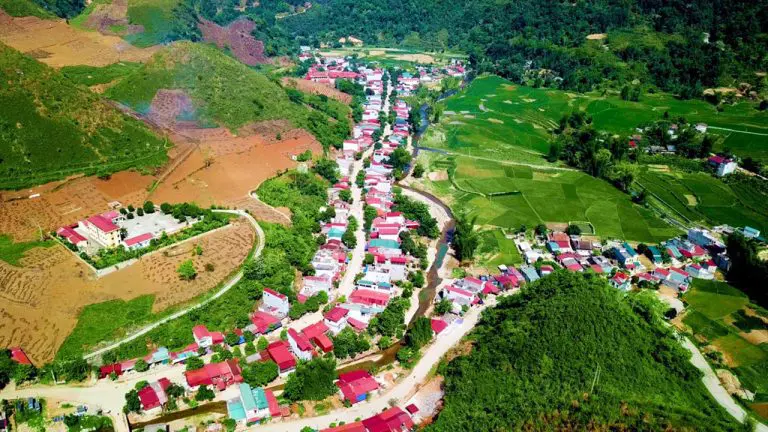
Mau Due Commune is situated in the Yen Minh District of Ha Giang Province, which is in the northern mountainous region of Vietnam. This area spans approximately 41.15 km² and is home to a diverse population of around 6,924 people as of 2021. The demographic composition is particularly interesting due to the presence of several ethnic groups, primarily the Mong and Tay, which together account for nearly 80% of the population. The remaining demographic includes the Kinh and Giay ethnic groups.
The geographical landscape of Mau Due is characterized by steep hills and terraced fields, offering not just stunning views but also unique agricultural practices that have been adopted over generations. As the region’s topography varies, it creates a microclimate suitable for diverse flora and fauna, making it a hub for eco-tourism. The combination of rich culture and the scenic countryside forms a perfect environment for those seeking an escape from urban life.
This vibrant mixture of ethnicities combines unique traditions, cuisines, and languages, enriching the cultural tapestry of Mau Due. If you find yourself visiting this commune, you may experience various festivals and rituals that reflect the values and beliefs of its diverse communities.
Historically regarded as a poor commune, Mau Due has seen significant improvements since 2011. Prioritizing rural construction and infrastructure development, the commune achieved national recognition for enhancing its living conditions and meeting new rural standards by 2016.
The journey of economic development can be summarized by a few notable milestones:
Despite these advancements, the commune still faces substantial challenges, particularly concerning access to clean water and sanitation facilities, which are critical components for sustainable development.
Access to clean water remains one of the most pressing issues for the residents of Mau Due. While socio-economic conditions are improving, the commune struggles with providing sufficient clean water for daily living needs.
This scarcity forces many residents to rely on untreated water sources, which can lead to health issues such as gastrointestinal diseases stemming from contamination, especially during periods of flooding when sanitation infrastructure is overwhelmed.
The lack of an efficient water supply and sanitation system contributes to an ongoing public health crisis. Currently, many areas within Mau Due rely on untreated water sources, which are often contaminated. This contamination poses health risks, especially for vulnerable groups such as children and the elderly.
Some key health concerns associated with poor water quality in Mau Due include:
Efforts are underway from various organizations and the local government to improve water access, but it remains a challenging issue that requires continued attention and funding.
Despite its challenges, Mau Due Commune is renowned for its stunning natural landscapes that attract tourists year-round. From terraced rice fields that cascade down the mountainsides to majestic views from the famous Ma Pi Leng Pass, the commune offers an unforgettable experience.
The attractions not only display the beauty of Mau Due but also provide opportunities for tourists to engage with local cultures, participate in traditional festivities, and sample authentic Vietnamese cuisine.
Mau Due is relatively accessible and can be reached via scenic mountain routes from Ha Giang city. The journey itself is part of the adventure, as travelers navigate picturesque landscapes.
Mau Due Commune is undeniably a compelling destination, ideally suited for those who seek authentic experiences amid unparalleled natural beauty. While the commune faces significant challenges especially regarding water accessibility and ongoing economic development it also presents visitors with the opportunity to engage deeply with vibrant local cultures and breathtaking landscapes. The balance of tradition and progress paints a picture of resilience and potential, making Mau Due not just a place to visit, but an experience to cherish and remember.

Xin Man district has a complex terrain, located in the upper Chay River mountain range, so it is mainly hills with steep slopes and divided by many streams.
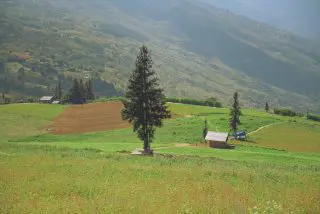
Venture into the untamed beauty of northern Vietnam with Vietnam Treasure and discover the magic of Suoi Thau Steppe. This captivating landscape offers a unique blend of cultural immersion and breathtaking natural scenery far from the bustling tourist trails.
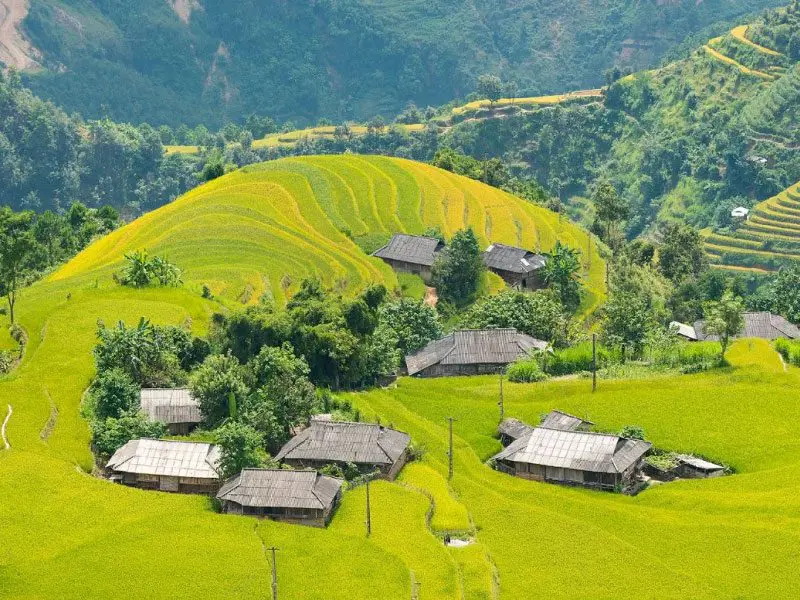
Nestled high in the mountainous region of Ha Giang, Phung Village (Ban Phung) is a hidden gem offering a glimpse into the authentic beauty and culture of Northern Vietnam.
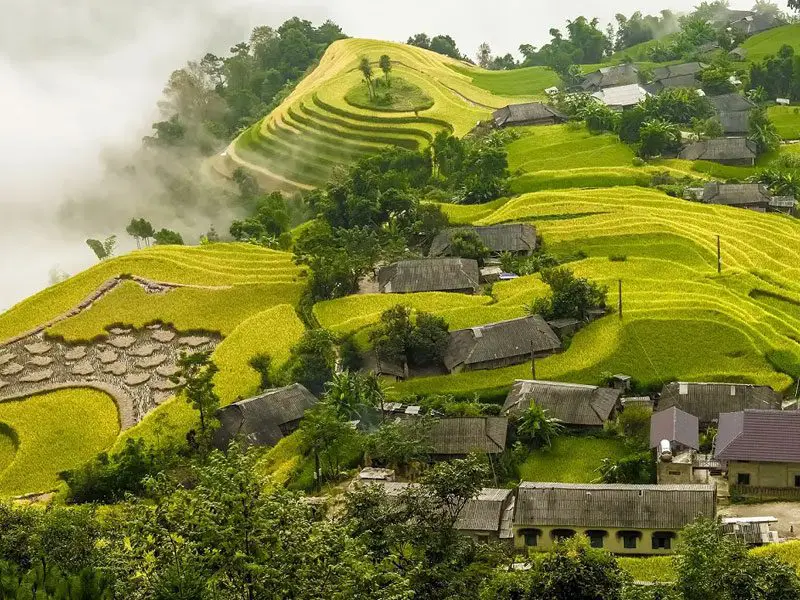
Stop at Thong Nguyen Village, and you will discover amazing beauty. This is a rugged and difficult mountainous area. Many people may think that nothing is interesting here. Join Vietnam Treasure to discover the beauty of Thong Nguyen Village.
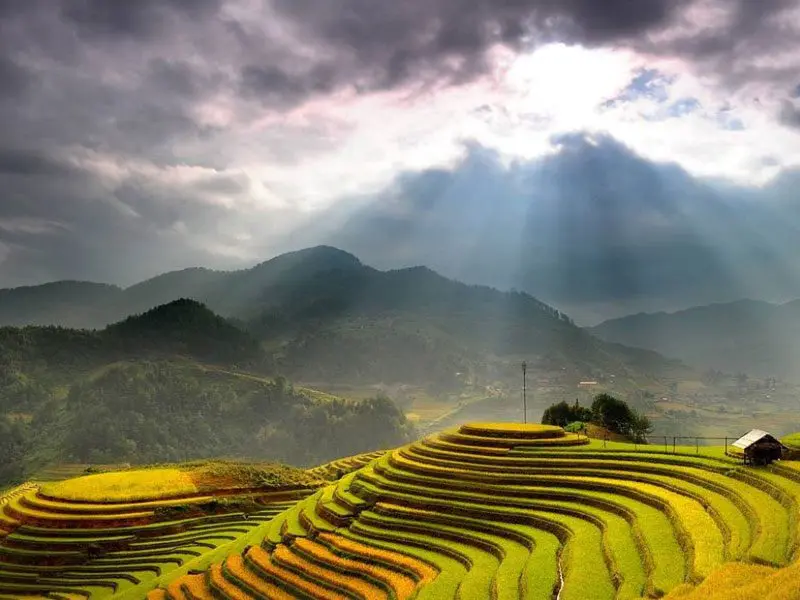
Its name, Hoàng Su Phì or Hoàng Thụ Bì, means “the yellow bark” in the Hmong language. It indicates the woods of weeping cypress, which is a local specialty.
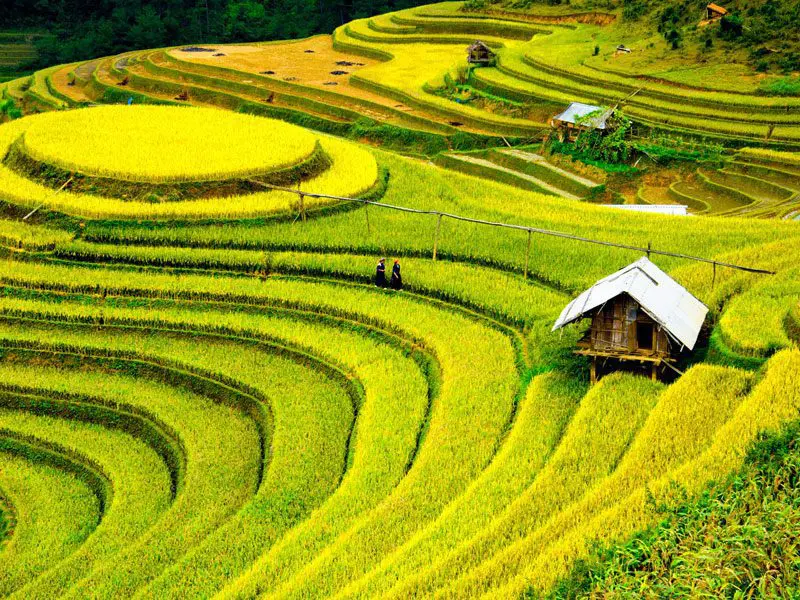
Hoang Su Phi terraced fields possess an undeniable charm, creating a mesmerizing scene—journey to Ha Giang with Vietnam Treasure to witness the brilliant golden rice harvest season. Although present in many countries, especially in Southeast Asia, terraced fields in Vietnam are deeply associated with the traditional agricultural activities of many ethnic groups in the northern mountainous region, such as the H’Mong, Dao, Nung, La Chi and Ha Nhi.
Tu San Canyon (Mèo Vạc district), the deepest canyon in Vietnam. It has a depth of about 800 m, a length of 1.7 km, and cliffs that slope 70° to 90°.

Discover the charm of Pao’s House, Ha Giang. Dive into local culture and scenic beauty. Plan your adventure now!
Copyrights @2025 Vietgo Travels. Terms and Conditions Privacy Policy
Hotline
+84 855 452 888 (Viet Nam) / +1 (206) 665 3090 (US)
Email: [email protected]
Website: www.vietgotravels.com
Head Office:
No. 23 Lo Su Street, Hoan Kiem District, Ha Noi, Viet Nam.
Viet Nam’s branch:
No. 35 Hang Quat Street, Hoan Kiem District,
Ha Noi, Viet Nam.
US:
831 41st Pl, Everett, WA 98201, USA